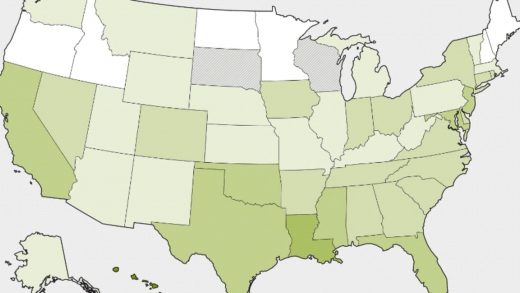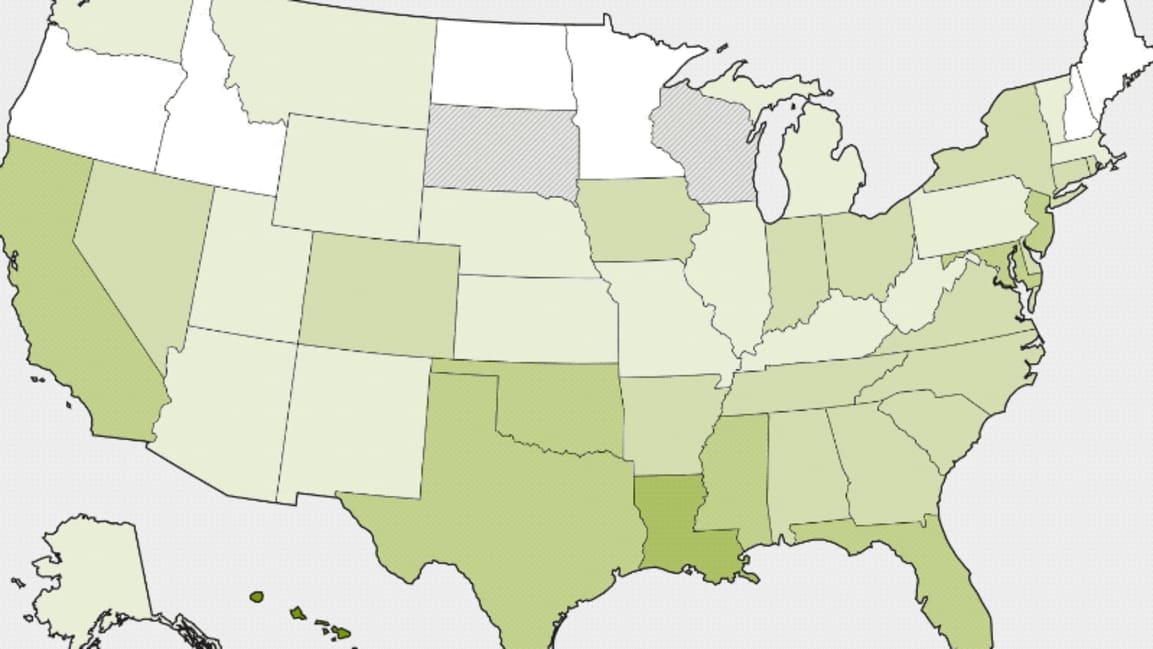This flu symptoms map lets you track where sore throats and fevers are getting worse
Have you been noticing more coughing at the office lately? What about that guy who just sneezed all over you on the train ride home?
No, you’re not just being paranoid. Flu season is upon us, and more and more people are getting sick. According to the latest data from the Centers for Disease Control and Prevention, 2.5% of all visits to healthcare professionals last week were the result of “influenza-like illness,” or ILI, meaning symptoms commonly associated with the flu, such as fever, sore throat, sneezing, and chest discomfort. Some 30 U.S. states and D.C. are now reporting at least minimal flu-like activity, while seven states and Puerto Rico are experiencing high levels, the CDC says.
For folks who remember just two flu seasons ago—the nastiest in a decade—these warning signs are particularly worrisome.
Fortunately, there are better tools than ever to help track where symptoms are being reported. One particularly handy resource is the “flu dashboard” from healthcare company Athenahealth, which includes an animated map that shows where flu-like symptoms are showing up from week to week. Sourcing data from insurance claims, the tool analyzes diagnosis codes and finds those that match symptoms the CDC says are consistent with ILI.
The weekly data stretches back a year and includes “1 million patient visits per week to more than 25,000 pediatricians, primary care providers, and emergency medical providers,” according to Athenahealth. A spokesperson for the company says the tracker will continue to be updated throughout the 2020 flu season.
You can check out the tool here.
The darker areas of the map indicate increased symptomatic activity, and if you compare it to the CDC’s own weekly ILI activity map, you’ll see they’re pretty similar. Both show especially high activity across the Deep South and Nevada in recent weeks.
All of this may help explain, not your cubicle neighbor’s persistent cough, but why more of your coworkers seem reluctant to shake your hand lately. That’s just one of the many coping mechanisms people employ in the workplace to avoid getting sick.
And for what it’s worth, getting sick doesn’t have to mean the flu. It could just be a mere cold. If you’re curious about how to tell the difference, this helpful chart sorts out the symptoms. One key distinction: Colds tend to come on gradually, while the flu feels like you just got run over by a Tesla Cybertruck.
(23)



